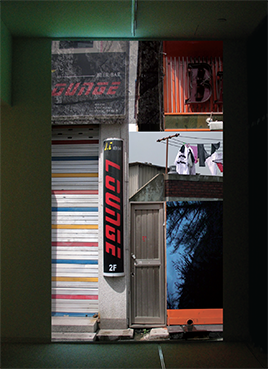Narrow Sorrow, Dongducheon, 2007 . 2009
I record people who actually exist but who do not. I bring to awake the memories of those women who wandered through the dark nights like apparitions or vanished over time, and record them in my work as an alternative history. So called the ‘unregistered’, ‘unidentified’- club ‘sisters’, the second generation of multicultural families, and people from different minority groups- are outsiders who have not been pronounced. As I inform social and gender issues inherent in Dongducheon that have thus far not been uttered in my work, I try to capture ‘the lifes’ of Dongducheon. The motif leading this work is the sound as a from of defying will, resistance and survival of women in Donducheon. For this piece, I record nosies on the street, mostly the sounds of immigrant club worker’s chatting, singing, playing, calling costumers, flirting army, and chanting. The sound, being a hybridid of Korean, English, and Tagalogue, humming, singing, chanting, almost resemble that of mourning. The base image of the video is one of the narrow gates situated between club buildings, behind which even smaller doors unfold leading onto club workers’ shabby lodgings. The width of the gate is too narrow that it is difficult to imagine a person can actually pass through it.
siren eun young jung is known for her art projects that are based on her own studies, researches, and analyses of traditional Korean female theatre called “yeoseong gukgeuk,” which refers to a genre of performing art that was popular in the 1950s but has been forgotten without ever being established as either a traditional or modern form of Korean theatre. Yeoseong gukgeuk whose performers are exclusively female is a subject that serves as a greatly important ethnographic entity through which she attempts to how gender norms and cultural contemporaneity are understood and constituted. This form of female theatre can be observed in the histories of modern East Asian regions including Korea, and this subject allows one to face head-on what modernity’s desire invented and interpellated—the firm dichotomy in gender performance and the ideological ideas that govern the dynamics of the formation and exclusion of tradition. The artist deliberately puts on hold the existing history writing methodologies of yeoseong gukgeuk and stays herself in/side the discourses and memories of yeoseong gukgeuk. And she fills this inactivated time with the sense of mass of space, namely, the bodily movement of performance. Her emphasis is not given to the restoration of the intrinsic legitimacy of yeoseong gukgeuk. Rather, this sense modification of jung underlines the political power of more anomalous and queer artistic practices.

